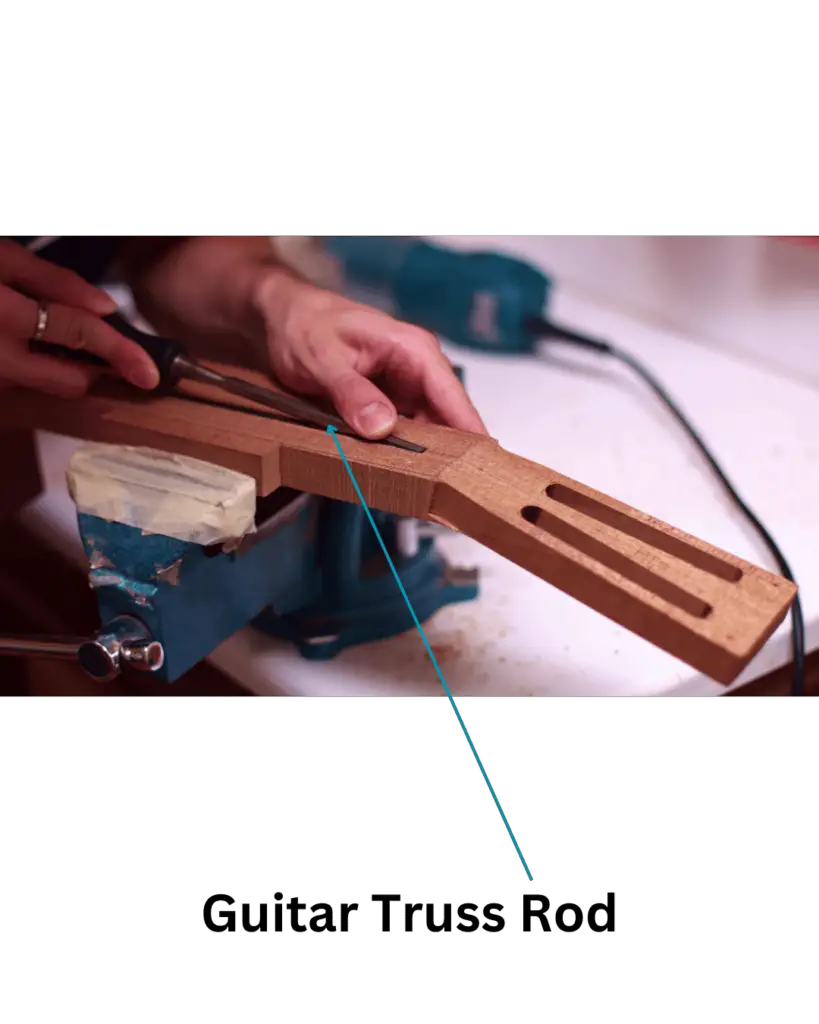In this post you’ll learn truss rod guitar basics in under 2 minutes.
Let’s dive in.
What is a truss rod?

The truss rod is a metal rod inside your guitar neck. Its job is to counteract the tension of the strings and keep the neck straight.
Here’s why that’s necessary:
Guitar strings pull forward, and the truss rod pushes back.
This keeps your neck from warping or bowing over time.
If your guitar’s action feels too high or too buzzy, the neck might be bowed. That’s where adjusting the truss rod comes in. A small turn can make a big difference.
- Turning it clockwise usually flattens the neck.
- Turning it counterclockwise adds more relief, or bow.
But here’s a warning before you adjust your truss rod: Don’t crank it blindly. Always make tiny adjustments, like a quarter turn at a time, and check your neck.
If you’re unsure or lack confidence in adjusting your truss rod, a quick visit to a guitar tech/ luthier is worth it.
Conclusion: Truss Rod Guitar Basics
To recap what the truss rod does:
- It balances string tension to keep the neck straight.
- You can adjust it to fix neck bow and action height.
- Clockwise = less relief. Counterclockwise = more relief.
- Always adjust slowly and carefully.
That’s your truss rod 101. It’s simple in theory, complicated in practice, and fundamental in guitar anatomy.
See you next time! Thanks for reading this post, and now you hopefully understand how a truss rod works!



